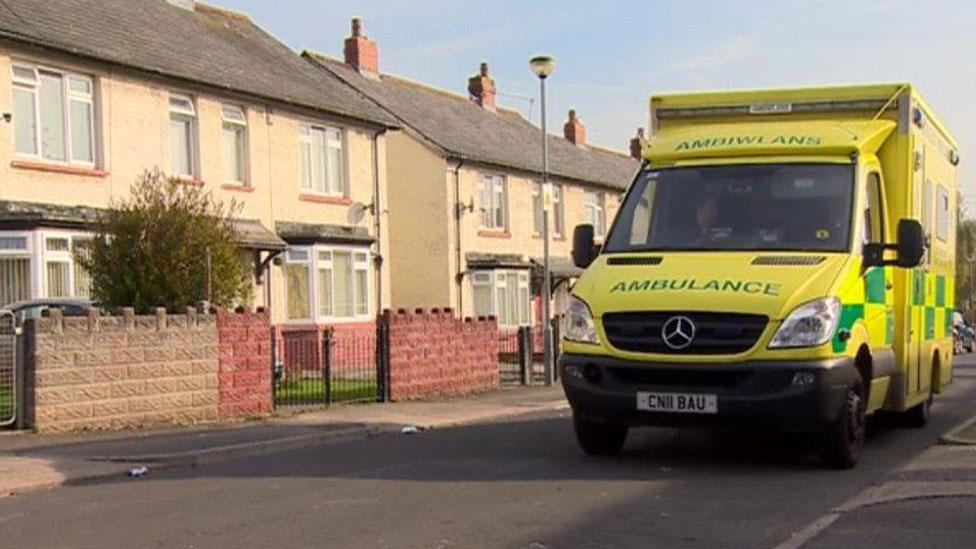Welsh Ambulance Service 'turns corner' - minister
- Published

999 calls for ambulances have been graded red, amber and green since last October
The ambulance service in Wales has turned a corner and its performance is "objectively getting better", the health secretary has said.
But Vaughan Gething said it still has "more to do" and continues to face big challenges as demand increases.
He was speaking to BBC Wales as latest performance figures show a main target hit for the ninth successive month., external
This involves 65% of ambulances on life-threatening red calls arriving within eight minutes.

Headline figures:
77.1% of emergency responses to red calls arrived within eight minutes - up from 75.5% in May 2016.
The service is handling 1,235 calls per day
The median time for an ambulance arriving on a "red" emergency call is 5 minutes 1 second.
But there are still thousands of "lost" hours with ambulances waiting outside hospitals to hand over patients - an equivalent of nearly five and a quarter years over the last nine months.

A new target came into force in October after a decision to overhaul the way performance of the service is measured.
A new "clinical model" came in with a "traffic light" system of grading calls.
The decision meant ambulance response time targets for all but the most serious calls were scrapped.
Previously the eight-minute target applied to about 40% of the 999 calls the ambulance service received but now applies to only to fewer than 10% - only those judged to be immediately life-threatening.
For all other calls - categorised as amber or green - the ambulance service is given more time to judge the most appropriate response.
It is argued this allows vehicles and crews to be prioritised to calls where a life is immediately at risk,
Under the old system the service consistently failed to meet its targets amid concerns that resources were spread too thinly.
Health Secretary Vaughan Gething is shown around a rapid response vehicle by paramedic Laura Deabreu.
Health Secretary Vaughan Gething said the service had moved away from a "blunt target" to more refined ones which judge the quality of care for the patient.
"More and more of those are being seen within the target time," he said.
"There's also more scrutiny about what the service does and much greater focus on the quality of care and outcomes for people as well."
Although conceding that the new target is "theoretically" easier to hit overall, Stephen Harrhy, chief ambulance commissioner for Wales, said the change had meant a quicker response to the most urgent cases.
"What we've been able to demonstrate is that we can get to a lot more of the calls for those people who have immediately life-threatening conditions than we were ever able to before," he said.
Supporters of the new model say the old targets, which were introduced in 1974, only took account of speed and ignored the quality of care delivered.
Since the new system come in to force in October a raft of "quality indicators" have been published with the aim of measuring the the results for patients.
'Leading the way'
They include several "clinical indicators" - for example whether or not patients who have suffered heart attacks, strokes or have fallen and broken their hips get the most appropriate care.
They also include measures of the delays face by ambulance crews waiting for space to become available in emergency departments.
The statistics show the number of hours "lost" by ambulance crews waiting to hand over patients increased significantly during the first three months of 2016 compared to the period between October and December last year.
But the ambulance service said its performance against clinical indicators held up well despite the additional pressures across the NHS during the winter months.
It conceded there was room for further improvement - particularly in making sure performance is consistent across Wales.
Richard Lee, director of operations for the Welsh Ambulance Service, says Wales is now leading the way in the UK for the way the system works.
Richard Lee, director of operations at Welsh Ambulance Service said the priority was to improve consistency across health board areas, "in very rural areas we have not improved as much as we'd like".
But overall, he said the response to the most urgent calls compares well with elsewhere in the UK.
Mr Lee said Wales was now "leading the way" in the UK for the way the system works and compares "very favourably" with pilot ambulance schemes running in Yorkshire and the south west of England.
"We could have invested tens of millions of pounds in hitting the previous targets but it wouldn't have made any difference to patients," he said.
"We know around 20% of our previous 'red' patients weren't even travelling to hospital.
"Our system previously categorised calls as 'potentially life threatening' and this was a very vague term. The new model concentrates resources on people who we know will come to harm if we don't arrive very quickly."
When the new targets came into force last year - opposition parties accused the Welsh Government of "moving the goalposts" to avoid criticism of ambulance service performance in the run up to the Assembly election.
Plaid Cymru described the change as a "dangerous experiment", but Mr Gething said the new model allows more scrutiny and honesty and has helped the organisation "improve its service for the people in Wales who really need it".
- Published27 July 2016
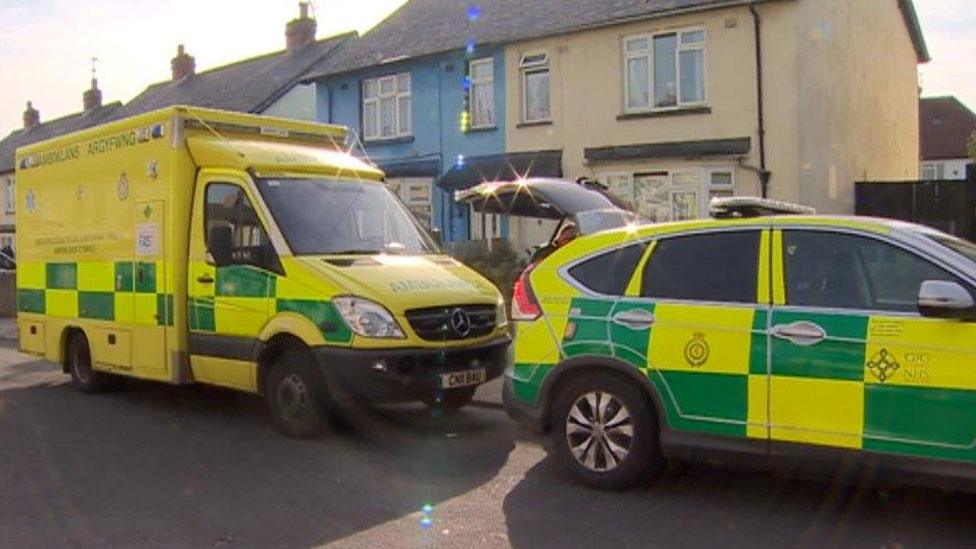
- Published27 July 2016
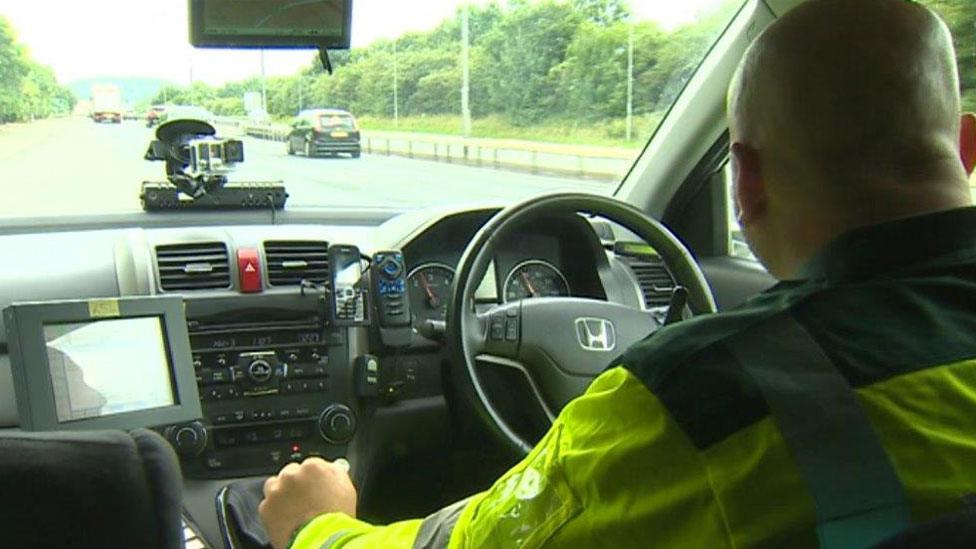
- Published27 July 2016
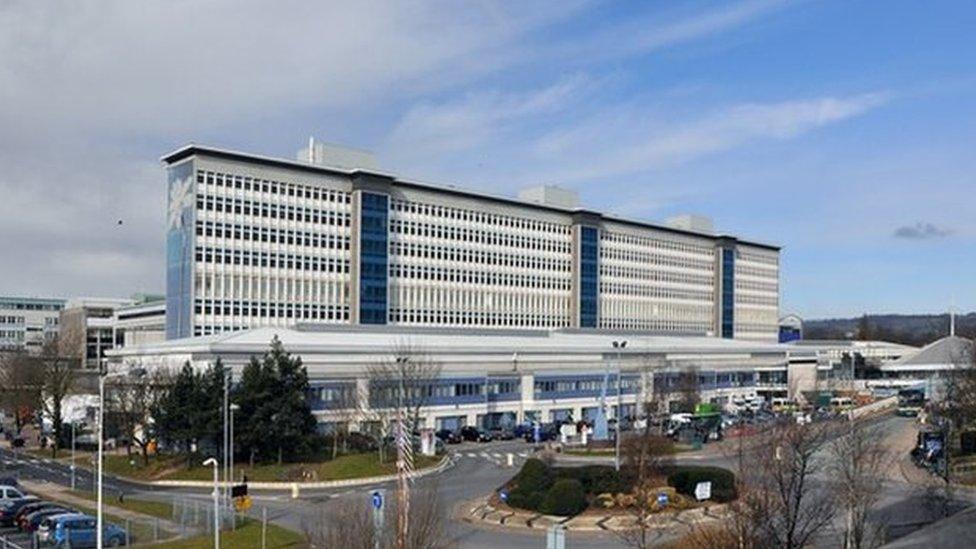
- Published27 January 2016
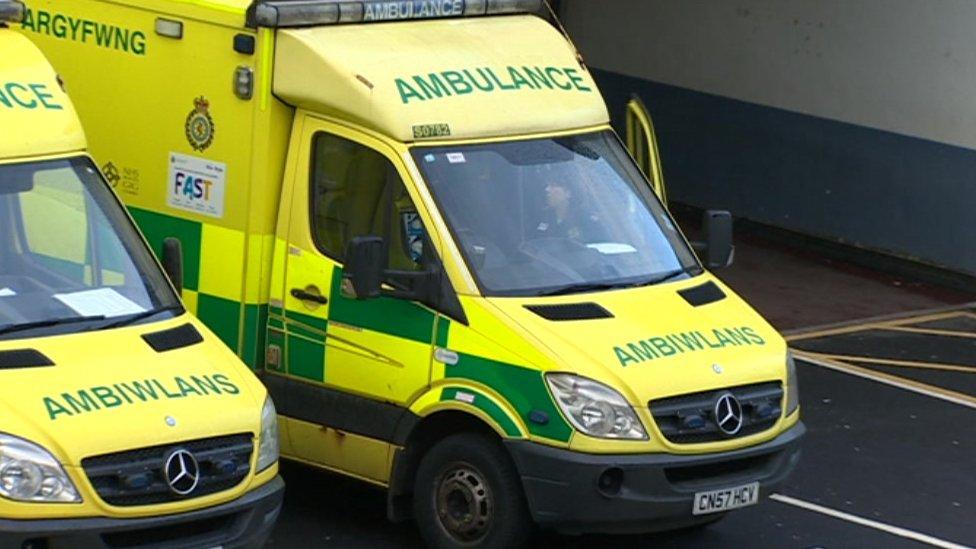
- Published30 December 2015

- Published1 October 2015
